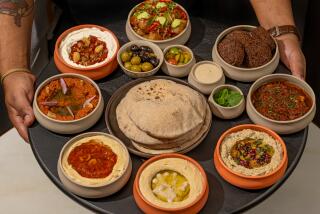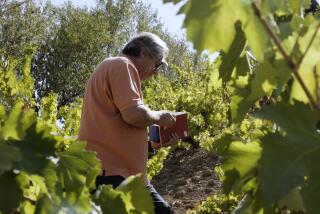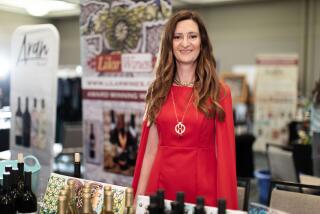Lebanon’s Premier Crus
- Share via
Wine originated in the Middle East, and Lebanon has produced wine for thousands of years. But in recent centuries, most of it has been distilled to make arrack, an anise-flavored liqueur like the French Pernod.
The modern Lebanese wine industry began in 1857 when French Jesuits established a monastery in the Bekaa Valley and started making liturgical wine. They expanded Chateau Ksara into commercial production around World War I. These days it is a secular firm, though there is still a chapel on the premises.
Chateau Musar, founded in 1930, and the more recent Chateau Kefraya also grow their grapes in the Bekaa Valley, on limestone-based soils at around 3,000 feet. (All three chateaux have the luxury of cool limestone caves for aging their wines.) The grapes are often harvested by teams of Bedouin migrant workers.
In recent years, all have been replacing old southern French grapes such as Cinsault, Grenache, Carignan and Muscat, at least to some extent, with noble varieties, mostly Cabernet Sauvignon, Sauvignon Blanc and Chardonnay. The quality of the wine is generally quite good. Kefraya specializes in Cabernet; Ksara also makes notable roses and has been experimenting with the Spanish grape Tempranillo. Musar, owned by the charismatic Serge Hochar, is mostly planted in Cabernet Sauvignon, Cinsault and two indigenous white wine grapes, Obaideh and Merwah, which Hochar believes to be the ancestors of Semillon and Chardonnay.
As a result of the civil war, a lot of arrack makers began using sugar beets instead of grapes. The great wineries, however, pointedly continue to make premium arrack from grapes and to age it in traditional clay vessels resembling the ancient Greek amphora.
At least in Christian areas, arrack remains the traditional beverage to go with Lebanese food. But recently some cooks have been reducing the amount of lemon juice in Lebanese recipes to make them go better with wine.
More to Read
Sign up for Essential California
The most important California stories and recommendations in your inbox every morning.
You may occasionally receive promotional content from the Los Angeles Times.













